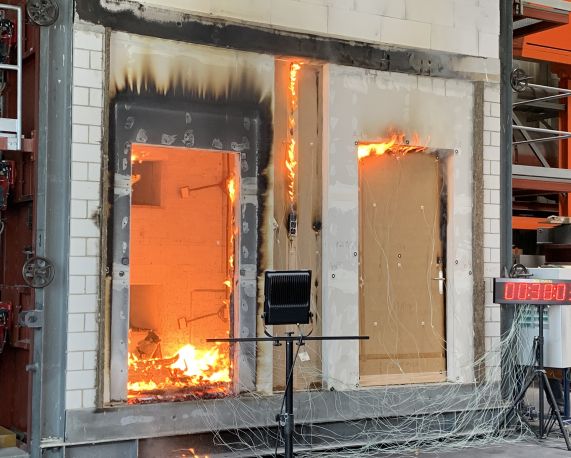Fire protection test according to the standard with ASSA ABLOY products


Product tests for doors and locking elements are an everyday part of the industry and are usually not that exciting. But the ones carried out by a Swiss door manufacturer in June were slightly more spectacular: In a big fire protection test in accordance with the European standard, a solid door and a semi-glazed wooden door were integrated in a furnace, subjected to fire for over half an hour and put through their paces.
The background:
The test aimed to determined how and whether these doors and their components can withstand direct exposure to fire for at least 30 minutes. Both the door manufacturer and ASSA ABLOY wanted to observe how the installed lock components behave under these extreme conditions and whether the resistance period of the doors is negatively affected by the locking products.
Prior to the test, the test institute had already identified neuralgic points on the doors. As a specialist in assessing the suitability for use of building products, the service provider supports manufacturers in technical matters on an international level.
The standards:
With regard to dimensional changes – due to extreme heat as encountered during a fire, for example – precisely defined European standards apply for lock components. They not only have to ensure that the doors remain usable in the event of an emergency, but must also help to delay the spread of a fire in closed state as far as possible. Ideally, the component should also have no or minimal heat bridging effect.
The setup:
One solid wooden door and one semi-glazed wooden door were installed in a test wall for the test. Conventional frames, drywalls and potential wiring were used to make the conditions as realistic as possible. The locking elements installed were a cable transition, a lock and an additional latch. The wall was then integrated in an oversized furnace as an external wall.
Sensors were mounted on all neuralgic points identified by the test institute. This enabled the temperature development on the relevant surface to be observed. Special cameras were also in place to enable visual deformations to be monitored.
Installed locking products:
- effeff OneSystem panic security lock 819N E0F16940000
- effeff door opener 332.80———F91
- MSL covered cable transition 10314-40——00
- Planet drop-down seal HS FH+RD
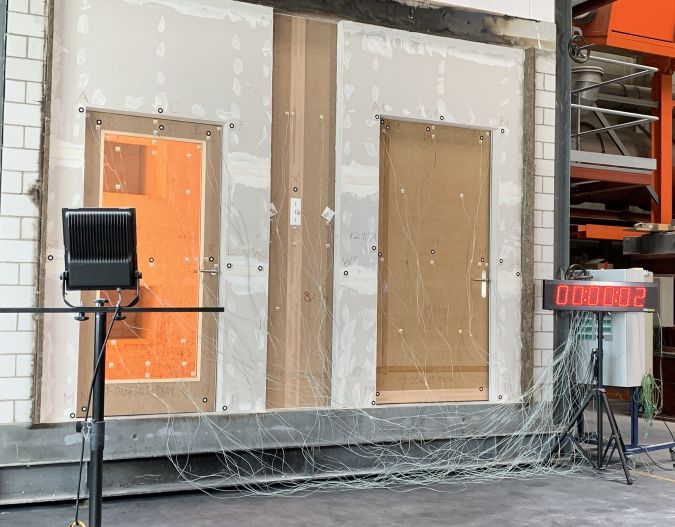
Fig.1: The furnace is started up.
The test:
A visual change was already apparent on the glass window after two to three minutes. Via the small inspection flaps in the rear wall of the furnace, it was possible to observe that the insides of both doors were already completely charred. From the outside, the solid wooden door appeared to be still intact at this point. After around 15 minutes, the glazed door had altered significantly: only the gel layer between the panes of glass prevented the window from shattering.
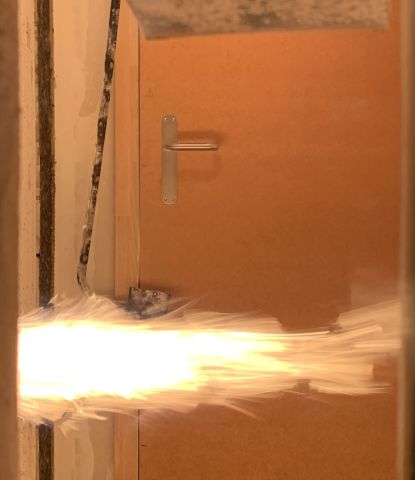
Fig. 2: View of the doors inside the furnace.
Fig. 3: Just two minutes after the start of the test, the door panels are already significantly charred and have undergone visual changes.
After 30 minutes, the temperature in the furnace has reached around 850 degrees Celsius. The glazed door clearly gave up at this point and the first visual changes were also apparent on the solid wooden door. These could mainly be observed in the areas with the installed metal components. For the solid wooden door, the test was finally ended after around 37 minutes, as the flames had been penetrating through the lintel and the hinge side for approximately 10 seconds.
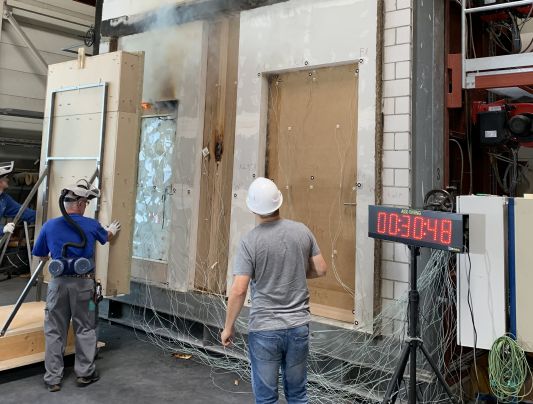
Fig.4: The glass door is covered once it has completed the test. The minimum period of 30 minutes was exceeded.
Fig. 5: The test is completed on both doors after 37 minutes. The glazed door is completely burned-out and flames are now penetrating through the solid wooden door.
The result:
The test wall was then removed from the furnace and the remains of the doors were extinguished. All data and images were saved and evaluated in the days following the test. These results will now be used in the further safety development work for doors and locks. But we can already say that the lock products from ASSA ABLOY have passed the fire protection test.
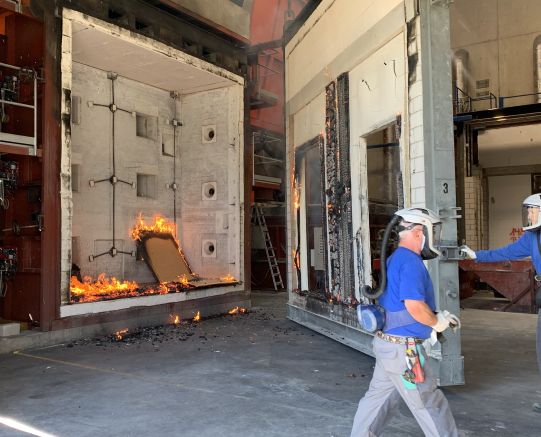
Fig.6: The test wall is detached and removed from the furnace

